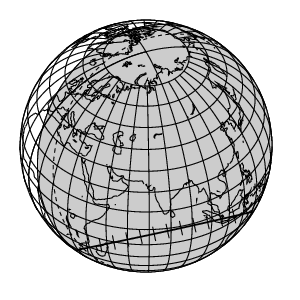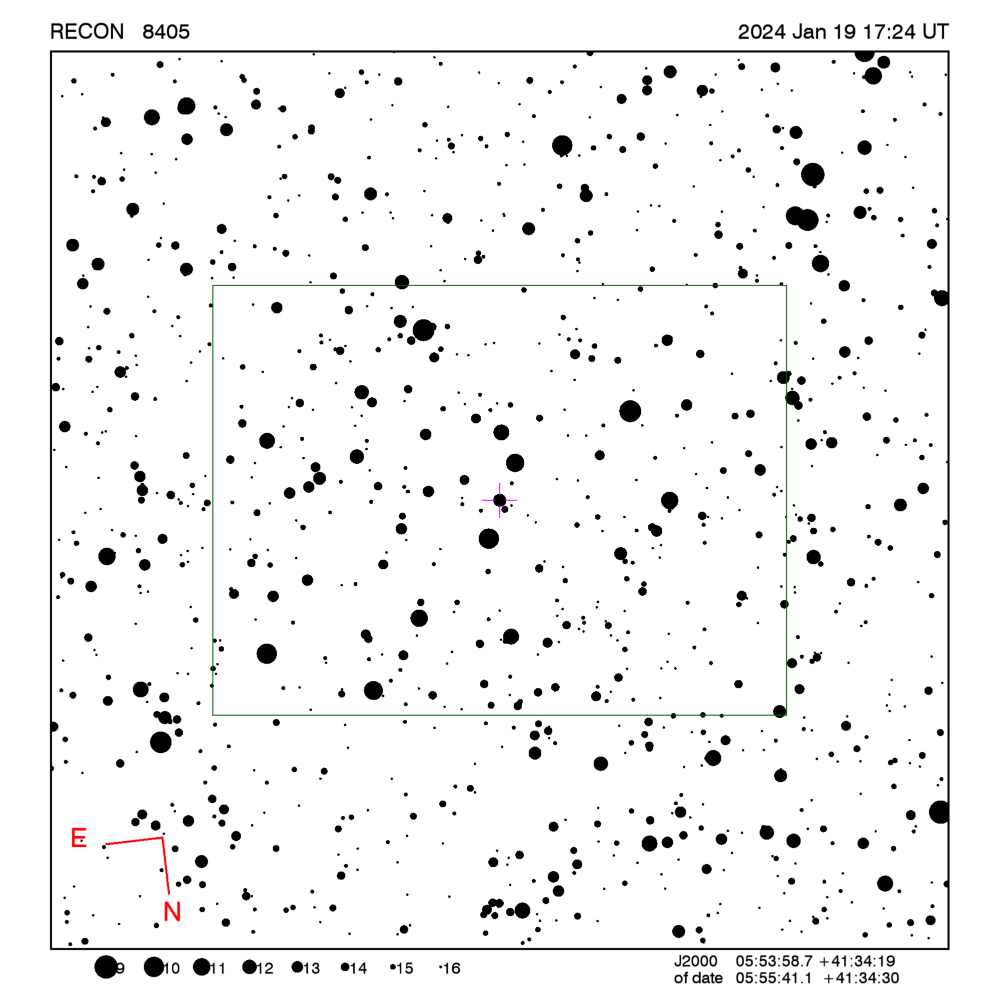RECON: TNO occultation with 8405
Event between (8405) Asbolus and star GA1300:03197311
with event index number of 1331007
Geocentric closest approach at 2024/01/19 17:25:36 UTC
J2000 position of star is 05:53:58.7 +41:34:19
Equinox of date position of star is 05:55:40.3 +41:34:30
Stellar brightness G=12.9,
use SENSEUP=32 with the MallinCam and and exposure
time of 500 milli-seconds with the QHY174 camera.
Star is 42 degrees from the moon.
Moon is 67% illuminated.
Apparent brightness V=23.3
 Object is 25.0 AU from the Sun
and 24.2 AU from the Earth.
Object is 25.0 AU from the Sun
and 24.2 AU from the Earth.
Apparent velocity is 22.7
km/sec on the sky relative to the star, or,
4.7 arcsec/hr.
The 1-sigma error in the time of the event is 120 seconds.
The 1-sigma cross-track error in the shadow position is
1232 km.
The object has an absolute magnitude Hv=9.2
Diameter=91.2 km assuming a 5% albedo -- 3.8 sec chord
Diameter=37.2 km assuming a 30% albedo -- 1.6 sec chord
Dynamical classification is CENTAURR
Star training set for 8405, (2024/01/19 17:26UT)
Object RA Dec mag sep mel
Pollux 07:46:47.2 +27:57:58 1.1 26.39 64
34Bet Aur 06:01:17.6 +44:56:50 1.9 3.52 44
PPM 048445 05:48:58.1 +42:31:59 6.3 1.57 41
PPM 048560 05:57:38.8 +41:19:31 6.8 0.44 43
PPM 048523 05:54:47.4 +41:27:21 9.6 0.21 42
PPM 048539 05:55:43.6 +41:35:37 10.7 0.02 42
8405 05:55:41.1 +41:34:30 12.9 43
Positions are for equinox of date

Azimuth is measured in degrees eastward from north.
North is at an azimuth of 0, due East is at an azimuth
of 90 degrees, due South is 180, and due West is 270.
Do not use the listing below for the RECON CPC 1100 telescopes.
This is provided for other non-team facilities.
Star training set for 8405, (2024/01/19 17:26UT)
Object RA Dec mag sep mel
Pollux 07:45:17.9 +28:01:33 1.1 26.39 64
34Bet Aur 05:59:31.6 +44:56:51 1.9 3.52 44
PPM 048445 05:47:14.7 +42:31:34 6.3 1.57 41
PPM 048560 05:55:56.6 +41:19:24 6.8 0.44 43
PPM 048523 05:53:05.1 +41:27:08 9.6 0.21 42
PPM 048539 05:54:01.1 +41:35:26 10.7 0.02 42
8405 05:53:58.7 +41:34:19 12.9 42
Positions are for J2000
Event circumstances last updated at 2023/11/06 05:18:44 UT
Marc W. Buie,
Southwest Research Institute
RECON
 Object is 25.0 AU from the Sun
and 24.2 AU from the Earth.
Object is 25.0 AU from the Sun
and 24.2 AU from the Earth.
